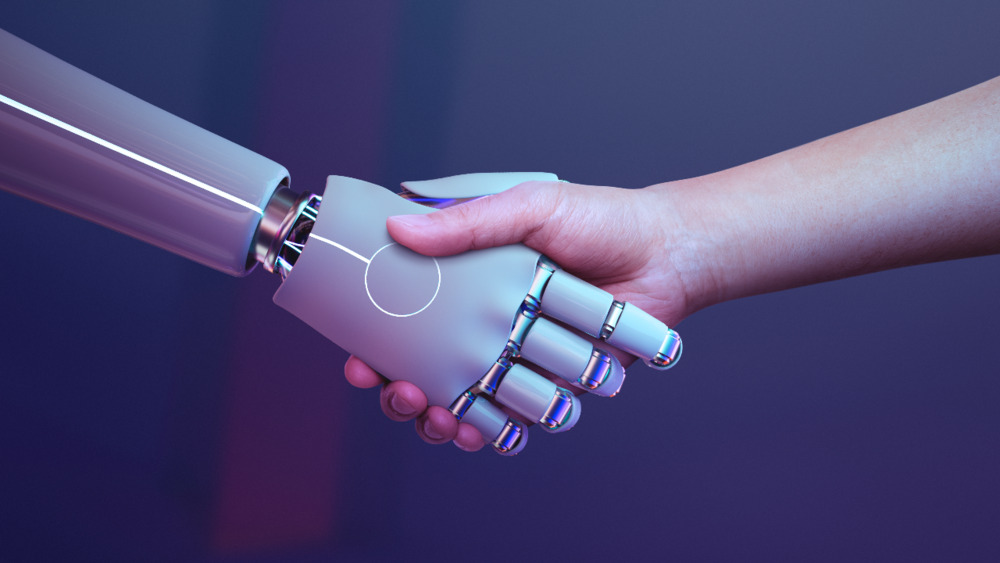
The Impact of AI on the Voice-Over Localization Industry in Malaysia
Voice-over localization is a critical part of the media landscape, especially in a multicultural country like Malaysia. With its rich tapestry of languages, dialects, and cultures, getting audio content right is not just important—it’s essential for connecting with local audiences. This process involves adapting audio content to suit the linguistic and cultural needs of specific groups, ensuring that everything from films and TV shows to advertisements and online videos resonates deeply with viewers.
Traditionally, voice-over localization encompasses several steps: translating scripts, hiring skilled voice actors, and recording audio that matches the original content's tone and style. It’s a meticulous process that requires not only linguistic expertise but also an understanding of cultural nuances. Voice actors play a pivotal role here; they are the artists who bring characters and narratives to life, infusing them with emotions and cultural references that truly engage listeners.
However, with the rapid rise of artificial intelligence (AI) technologies, the landscape of voice-over localization is undergoing significant changes. AI tools are increasingly being integrated into the localization process, offering various benefits but also presenting challenges that could impact the future of this essential industry. This article explores the multifaceted impact of AI on the voice-over localization industry in Malaysia, highlighting both its advantages and the hurdles that lie ahead.
AI in Voice-Over Localization
Automation of Processes
AI is revolutionizing the voice-over industry in numerous ways. Technologies like text-to-speech (TTS) and deep learning algorithms are now common tools that help automate translation and voice synthesis. With AI, companies can produce voice-overs more efficientlyMarginal note: than ever before. For instance, AI can generate voice content quickly, minimizing the need for long recording sessions and multiple retakes. This efficiency can be a game changer, especially in fast-paced industries like advertising and news where timely content delivery is crucial.
The automation of these processes does not merely speed up production; it also allows for greater scalability. Companies can produce vast amounts of localized content in a shorter time frame, making it easier to reach diverse audiences across different platforms. For example, a single campaign can be adapted into multiple languages and dialects, ensuring that it is relevant to various demographic groups without the logistical challenges of traditional recording methods.
Local Innovations
In Malaysia, local companies are beginning to make use of the power of AI. Many advertising agencies are exploring how AI-generated voices can enhance their campaigns, particularly when targeting multilingual audiences. For example, a Malaysian agency was able to produce ads that delivered messages in various languages to make sure they not only resonated with different demographics but also maintained a consistent brand voice. This not only helps reach a wider audience but also ensures that messages are culturally relevant and impactful.
Furthermore, AI tools can analyze audience preferences and behavior, allowing companies to tailor their voice-over content to suit specific audience segments. By gathering data on how different demographics respond to various tones, styles, and accents, agencies can create more effective and engaging content. This kind of targeted approach is particularly beneficial in a multiethnic society like Malaysia, where cultural sensitivities and preferences can vary widely.
Enhancing Quality
While AI can significantly enhance efficiency, it also raises concerns about quality. The synthetic voices produced by AI may lack the emotional depth and authenticity that human voice actors bring to their performances. This is especially important in voice-over localization, where conveying the right emotions and cultural nuances can make or break a project. Audiences often connect more deeply with content that feels genuine and emotionally resonant, and this is an area where AI still has a long way to go.
To address these quality concerns, some companies are beginning to integrate AI with human oversight. For instance, human voice actors may initially perform the script, and AI can then be used to refine the audio, allowing for a blend of emotional authenticity and technical efficiency. This hybrid approach ensures that the final product retains the warmth and relatability that only human voices can provide while benefiting from the speed and scalability that AI offers.
Challenges for Voice Actors
Job Displacement
One of the most pressing concerns regarding AI in voice-over localization is the potential for job displacement. As AI technologies continue to improve, there is a genuine risk that companies might lean toward cheaper, automated solutions over hiring skilled voice professionals. This trend could lead to significant job losses and undermine the artistic integrity of voice-over work. Many voice actors rely on this profession for their livelihood, and the prospect of being replaced by machines is understandably alarming.
Moreover, the perception of voice work as a creative profession may diminish if AI-generated content becomes the norm. This could lead to a devaluation of human talent in the industry, as clients may prioritize cost savings over quality and authenticity. The challenge for voice actors will be to prove their unique value in an increasingly automated landscape.
Quality Issues
Quality remains a critical issue in the context of AI-generated voices. While these synthetic voices can be impressive, they often struggle with emotional delivery and the subtleties that human actors naturally incorporate into their performances. For example, AI might not effectively convey the excitement, sadness, or humor that a human voice actor would. This limitation can make localized content feel less engaging and relatable, which ultimately defeats the purpose of adapting it for a specific audience.
Additionally, the technology behind AI voice synthesis is continually evolving, but it still has limitations when it comes to understanding context and cultural references. For instance, idiomatic expressions or culturally specific jokes may not be translated effectively, resulting in content that feels flat or out of touch. This can lead to a disconnect with the audience, as AI-generated voices may not capture the nuances essential for effective communication.
Ethical Considerations
Moreover, ethical considerations surrounding AI's role in voice-over localization are becoming increasingly important. There are growing concerns about consent, intellectual property rights, and the potential misuse of AI-generated voices. For instance, if a company uses an AI voice that closely mimics a well-known actor without permission, it raises questions about ownership and rights. Ensuring that the industry evolves responsibly means addressing these concerns head-on and creating guidelines that protect both the technology and the artists involved.
As AI continues to develop, the risk of misuse increases. There are potential scenarios where AI-generated voices could be used to create misleading content or even deepfakes, which could have far-reaching implications for public trust and media credibility. The industry must work proactively to establish ethical standards and practices that ensure AI is used responsibly and transparently.
Current Trends in Malaysia

Growing Adoption of AI
The adoption of AI in voice-over localization is gaining momentum in Malaysia. More local companies are exploring how AI can enhance their operations. For example, a Malaysian advertising agency recently utilized AI-generated voices for a campaign aimed at a multilingual audience. The AI voices effectively delivered the message in several languages, resonating well with the target demographic and showcasing how technology can enhance localization efforts.
Successful Case Studies
These developments illustrate how AI can enhance localization efforts without sacrificing quality. By collaborating with tech companies, voice actors can improve the quality of AI-generated content while maintaining the emotional and cultural significance of their performances. This partnership can lead to innovative solutions that blend the efficiency of AI with the artistry of human voice work.
For instance, companies that have successfully integrated AI into their workflows often report increased productivity and faster turnaround times, allowing them to capitalize on emerging trends and market demands. This agility can be particularly advantageous in a fast-evolving media landscape, where timely content can set a brand apart from its competitors.
The Future of Voice-Over Localization
Emerging Roles for Voice Actors
Looking ahead, the future of voice-over localization in Malaysia is likely to be shaped by ongoing advancements in AI. As these technologies evolve, new roles for voice actors may emerge. For example, voice actors might take on jobs like voice coaching and script editing for AI-generated content. They could find themselves working alongside AI, using their expertise to enhance the quality of synthesized voices. This collaborative approach could lead to a richer, more nuanced voice-over experience that combines the best of both worlds.
Importance of Adaptation
Adaptation will be crucial for professionals in the industry. Continuous learning and upskilling will help voice actors stay relevant in an AI-driven landscape. Embracing technology while preserving the human touch will be vital for maintaining the integrity of voice-over localization. Voice actors will need to adapt to new tools and methodologies while emphasizing the unique qualities they bring to the table, such as emotional depth and cultural insight. This adaptation is not just about survival; it’s about thriving in a changing environment, where voice actors can leverage their skills in new and innovative ways.
Training and Development
As the demand for AI-generated content increases, training programs focused on blending traditional voice acting with AI technology could become essential. Workshops that teach voice actors how to work with AI tools, understand their limitations, and maximize their effectiveness could help bridge the gap between technology and artistry. This kind of education would empower voice actors to take control of their careers, ensuring they remain valuable contributors to the industry rather than victims of technological change.
Finding Balance
AI is undeniably transforming the voice-over localization industry in Malaysia. While it offers numerous benefits like cost savings and efficiency, it also presents challenges that need to be addressed. The potential displacement of human voice actors, quality concerns, and ethical considerations all warrant careful thought.
Collaborative Efforts
As the industry evolves, it’s essential to strike a balance between embracing AI and preserving the artistry of voice-over work. Ongoing dialogue within the industry will be vital in navigating these changes. Stakeholders must engage in conversations about the implications of AI, fostering an environment where technology and human talent can coexist harmoniously.
Addressing Challenges
By addressing challenges collaboratively, the industry can harness the benefits of AI while safeguarding the livelihoods and creative contributions of voice actors. It’s about finding that sweet spot where both technology and creativity can thrive. The focus should be on leveraging AI as a tool that enhances human creativity rather than replacing it.
Conclusion
A Significant and Complex Impact
In conclusion, AI is making a big splash in the voice-over localization industry in Malaysia. While these technologies bring exciting opportunities for efficiency and cost savings, they also raise important concerns about job displacement, quality, and ethics. As the landscape shifts, both voice actors and companies need to adapt to these changes.
A Blended Future
Looking ahead, we’re likely to see a mix of AI advancements and human creativity. This combination can open up new roles and opportunities for voice actors. As AI continues to evolve, there’s a real chance for voice actors to team up with these technologies, enhancing their work in ways we might not have imagined before. However, this will require everyone involved to commit to ethical practices and uphold the integrity of the craft.
Merging Technology with Artistry
The relationship between technology and artistry is going to be key. Voice actors need to find ways to incorporate AI tools into their work while keeping the emotional and cultural nuances that make their performances feel real. This ongoing evolution will require a proactive approach, with industry professionals actively seeking opportunities to collaborate with tech experts and leverage AI to improve their craft.
Keeping the Conversation Going
As we move forward, it’s essential to keep the conversation going about what AI means for this field. By doing so, we can